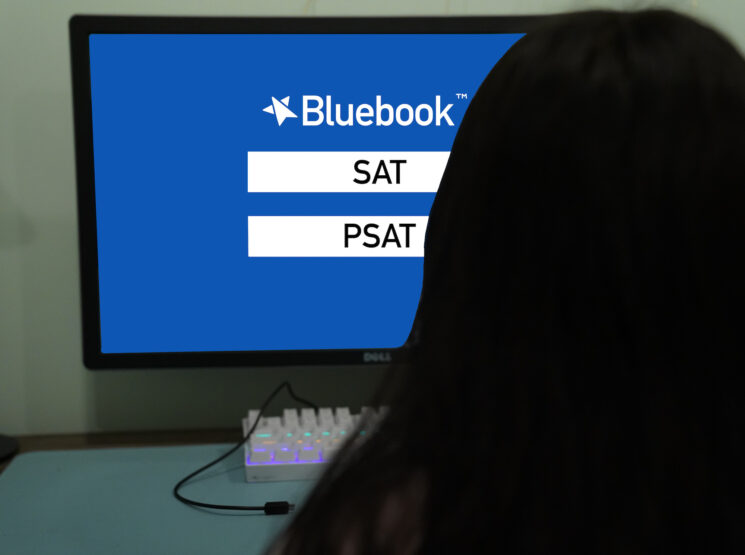
By Katelynn Luu
Last year, on Jan. 23, 2022, College Board announced that they would change the SAT and Preliminary SAT (PSAT) from the traditional paper-and-pencil format to a digital adaptive version. Since then, they have released more information regarding this new testing format.
In March 2023, all international SAT students will take the new digital test. The upcoming PSAT in the fall of 2023 will be the first digital PSAT that marks the switch away from the previous paper version. Next year, in the spring of 2024, the digital SAT will be offered to all students in the U.S. instead of the paper version, except to students who require accommodations.
Every test in the digital SAT suite will be taken on the Bluebook application that students are responsible for downloading prior to test day. The tests in the suite include the SAT, PSAT/National Merit Scholarship Qualifying Test, PSAT 10 and PSAT 8/9. Bluebook was developed by College Board and is designed to allow students to continue taking the test and not be affected in the case of an internet outage.
Concerning test security, tests will still be administered in person, and it is the student’s responsibility to bring their own charged device or to request a device from College Board. Since the digital application allows for each student to have a unique test experience, there is little risk of scores being canceled due to compromised test forms. Scores will also be released faster and will be announced within days of taking the test.
There are many differences between the digital and paper versions of the SAT and PSAT. Regarding test-taking time, the digital versions are shorter at two hours and 14 minutes for both tests. In comparison, the paper SAT is three hours and 15 minutes, and the paper PSAT is two hours and 45 minutes. The reading and writing sections will be combined into one 64-minute section with 54 questions. Students will be able to use calculators for the entirety of the 70-minute math section with 44 questions instead of having a separate no-calculator section.
The digital format of these tests also feature adaptive questions. Each section of the test is split into two modules, so there are four modules in total. In the first module of each section, questions will vary in difficulty. Student performance in the first module will determine the difficulty level of the questions they face in the second module. Each module in the reading and writing section is 32 minutes with 25 operational questions and two pretest questions, while each module in the math section is 35 minutes with 20 operational questions and two pretest questions.
According to The Digital SAT® Suite of Assessments Specifications Overview, “The digital SAT and paper and pencil SAT measure similar, but not identical content, so a score on the paper and pencil test is not a perfect predictor of how a student would perform on the digital test.”
For students preparing to take the digital SAT, Khan Academy offers free study resources. Their Official Digital SAT Prep partnership with College Board provides video lessons, practice questions and test-taking strategies.
As most students taking the PSAT and SAT do so in their junior year, the class of 2025, current sophomores, will be the first to take the digital versions of both of these tests.
“I think that the SAT going digital will be better and less stressful for students like me,” sophomore Daniel Le said. “Receiving my score faster will help me stress less about how I did, and I think the shorter time to take the test will allow me to focus more and stress less.”





